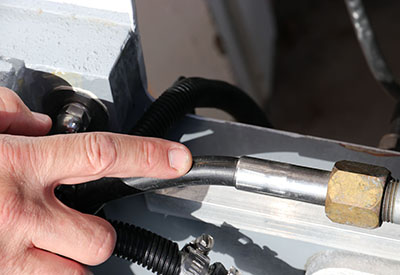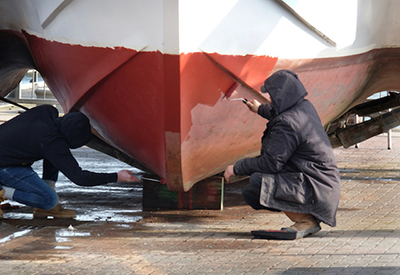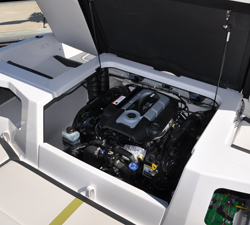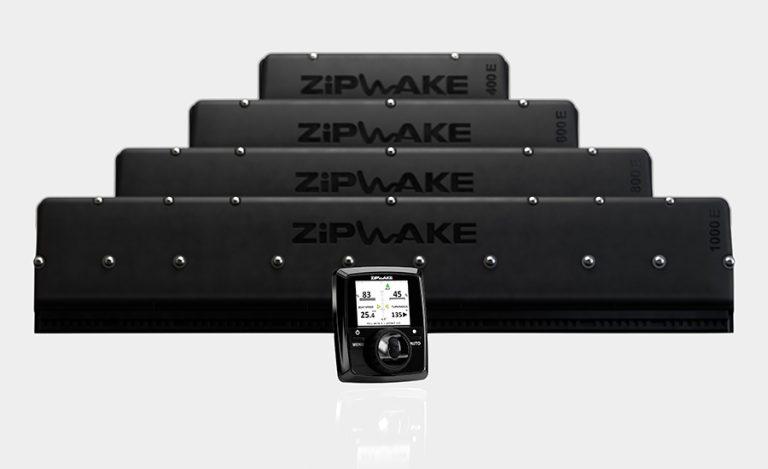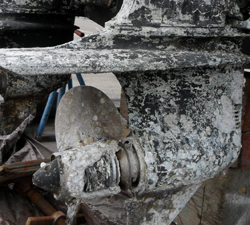Marine Batteries: Types, Charging, Wiring and Set Up
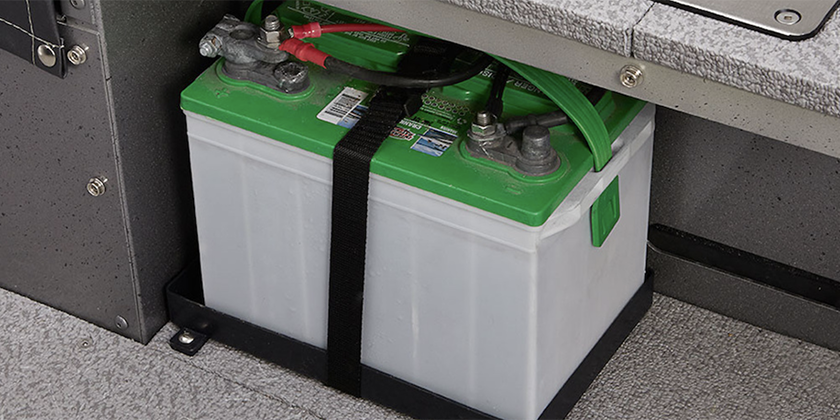
Marine batteries are designed specifically for boat usage.
Apr 11, 2024
Marine batteries are designed specifically for use on a boat, with heavier plates and robust construction designed to withstand the vibration and pounding that can occur onboard any powerboat.
For this reason, marine batteries are usually more expensive than automobile batteries, which can tempt some boat owners to purchase an auto battery instead of a marine battery. Don’t make that poor decision. A marine battery will last longer and be more reliable than an auto battery in a boat.
Types of Marine Batteries
There are three basic types of marine batteries:
- Marine Starting Batteries provide quick but powerful spurts of energy over short periods of time and are designed to start the engine and be rapidly recharged by the engine alternator. A starting battery should not be used for trolling motors or powering appliances.
- Marine Deep Cycle Batteries are designed to discharge slowly over a long period of time and to withstand several hundred charging and discharging cycles. A deep cycle battery is the right choice for powering an electric trolling motor and other battery-powered accessories such as audio systems, a windlass, depth finders, fish locators, and appliances. Deep cycle batteries should not be substituted for starting batteries.
- Marine Dual-Purpose Batteries combine the performance of starting and deep cycle battery and are a good choice on smaller when there’s no room for two batteries. While they’re able to perform the tasks of a starting battery and deep cycle battery, they’re not as efficient as separate batteries.
Deep Cycle vs. Cranking

If you have an electric trolling motor, thruster, windlass, or other battery powered accessories that draw larger amounts of current, you’ll want a separate deep cycle “house” battery for that purpose. A deep cycle battery is only meant to be used where high rates of discharging and re-charging occur often.
A deep cycle battery is constructed differently than a cranking battery, with thicker, heavier plates. The longer, higher amperage requirements of trolling motors and windlasses, for example, would heat and distort the thinner plates of a normal cranking battery.
The cranking battery has more yet thinner plates to give a fast voltage spike to crank an engine but is not intended to maintain high power output for long periods. Yes, a deep cycle battery can be used to start your motor in a pinch, but a two- or three-battery system is highly recommended to separate the engine battery from the accessory (house) batteries.
Testing
The best way to be sure your batteryis still good is to have it “load tested.” Most auto parts or battery specialty stores will load test your battery for free and tell you if it’s still serviceable. Just because it’s gone dead once or twice doesn’t necessarily mean it’s no good.
The rest of your electrical and charging systems may need some attention as well, as something other than the battery itself may be the cause of the problem.
Replacing Your Boat’s Battery
Consult your boat owner’s manual or a marine dealer when replacing a marine battery and be sure to buy a new battery that is a good match for your boat. Marine batteries are rated by their ampere hour rating, reverse capacity, and marine cranking amps.
When shopping for a deep cycle battery, you’ll want to pay the most attention to the ampere hour rating and reserve capacity. For starting batteries, focus primarily on the marine cranking amps. Consult all three rankings when searching for a dual-purpose battery.
If you add electrical accessories to your boat, you may need to upgrade to a battery with a higher amp-hour rating, especially if you spend a lot of time trolling with the engine at a very low speed (which results in less charging power from the alternator) or you spend a lot of time beached or at anchor while using accessories like the audio system.
Charging a Marine Battery
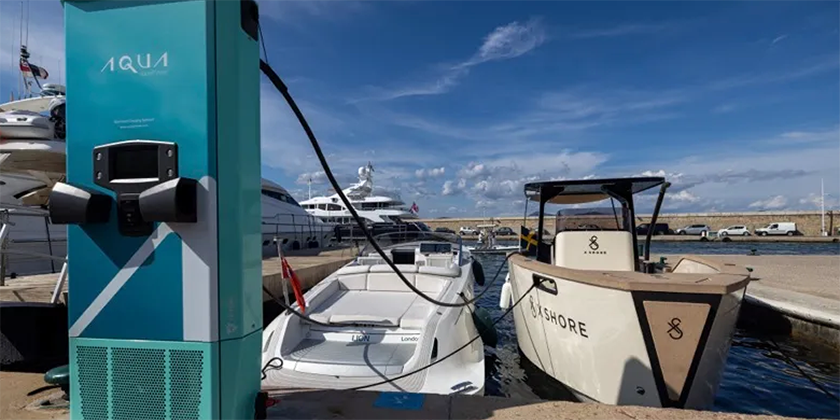
Most of us understand that when we are buying a new or used boat, the batteries supplied may not necessarily be top-of-the-line. If they seem to do the job, we don’t think much about them. But in the warmer climates everyday heat is a major enemy of batteries and can shorten their life considerably.
In areas of the country that force us to put boats in storage for the winter, how the battery is cared for during this period is also critical to increasing life expectancy.
It’s best to keep batteries on a regulated “trickle” charger to maintain charge while not in use. A battery that is not charged (and kept charged) can freeze in cold temperatures and a cracked case is the likely result. A battery is like a lot of things in life—use it or lose it! A car battery will typically last longer than a boat battery because the car is used regularly and the battery stays charged.
When it comes to boats, the old adage of a battery’s life being two years is pretty well on the mark. You’ll usually get a heads-up when it’s about to give up on you, with the warning being a “dead” battery one morning or a bit slower cranking speed than you’re used to. You plug in the charger, the battery miraculously comes to life, and you’re off on your trip.
You may think a light was left on, or that the radio memory pulled the voltage down. The reality may be that the battery is sulfating, plates are warped, and it no longer takes or holds a charge like it once did.
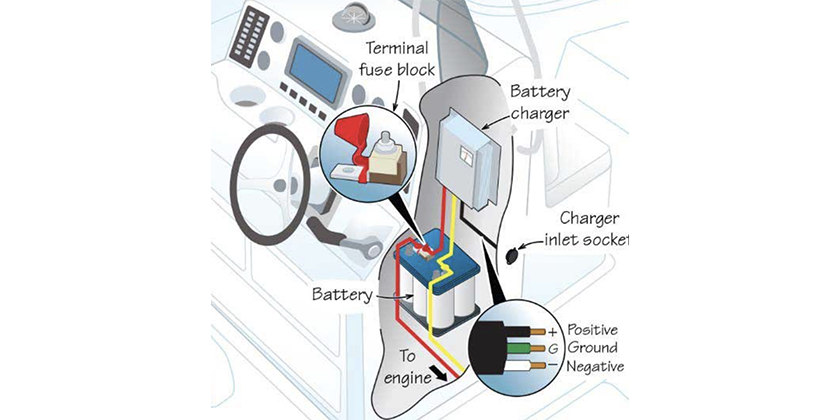
Tips for Avoiding Battery Problems
- Secure the marine battery with a good battery tray, which should have a base that is screwed or bolted to the boat and either a rigid bracket or a locking strap to hold it to the base. You don’t want the battery banging around in rough water.
- Frequently check the battery terminal connections to make sure they are snug and free of corrosion. Replace the wing nuts often found on marine batteries with nylon locking nuts, which are much less likely to come loose.
- If you use the boat infrequently, use a maintenance-type battery charger to keep the battery fully charged between outings.
- Before off-season storage completely charge the batteries then disconnect the terminals so nothing can draw the battery down. If there’s power available at your storage site, keep the batteries on a battery maintainer/charger through the off-season to continually maintain your batteries. Otherwise remove the batteries from the boat and store them where they can be connected to a maintenance charger.
- Install a cover or “boot” over the top of the positive battery terminal, if one was not installed by the boat builder, even if the battery is in a covered box. The boot prevents sparks and arcing and possible explosion if, for instance, a tool is dropped on the terminal.
Bottom line? Keep your batteries charged, keep the terminals clean, and by all means get out in the boat and “exercise” your electrical system as often as you can!
Courtesy of Discover Boating

